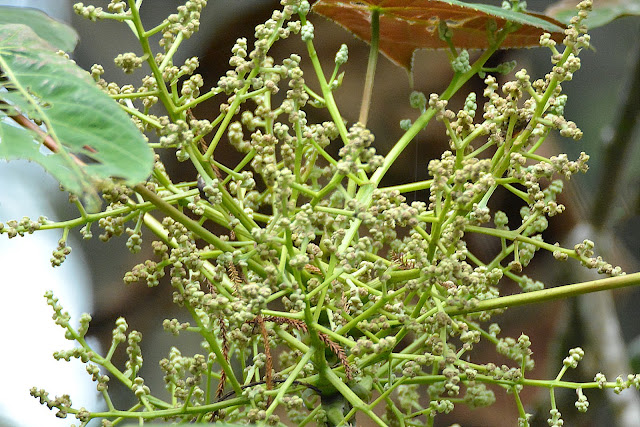Mimicry of Leaf
树叶的模仿技巧
In our young days, we used to go into the wild bushes and among the green leaves in search of a champion fighter spider after school as our pastime hobby. Quite often, we would encounter abnormal looking leaves such as those in the photos. Instinctively, we would avoid touching or getting close to the leaves for fear of being stung by the “bugs” on the leaves.
Today, botanists have found that some plants mimic the presence of insect eggs, beetles or other bugs on their leaves, dissuading insect species from laying their eggs or landing there. This is because insects are less likely to lay their eggs on plants that already have eggs, or forage a leaf seeing other bugs are already there.
Photos 1 to 4 of one species of plant mimics hairy bugs of red and yellow colors and it even mimics rotting “scars” on the leaf.
Photos 5 to 8 of another species of plant mimics a type of insect eggs or a type of beetles that even
include details of legs of the beetles.
This is obviously a good defensive or protective strategy to avoid harmful encounters by deceiving enemies by dissuading them to somewhere else. Those enemies include fighter spider hunting school boys like us.
(Photos taken June 2016, Sg Sedim, Kedah)
Photos 1 to 4 of one species of plant mimics hairy bugs of red and yellow colors and it even mimics rotting “scars” on the leaf.
Photos 5 to 8 of another species of plant mimics a type of insect eggs or a type of beetles that even
include details of legs of the beetles.
This is obviously a good defensive or protective strategy to avoid harmful encounters by deceiving enemies by dissuading them to somewhere else. Those enemies include fighter spider hunting school boys like us.
(Photos taken June 2016, Sg Sedim, Kedah)





































































